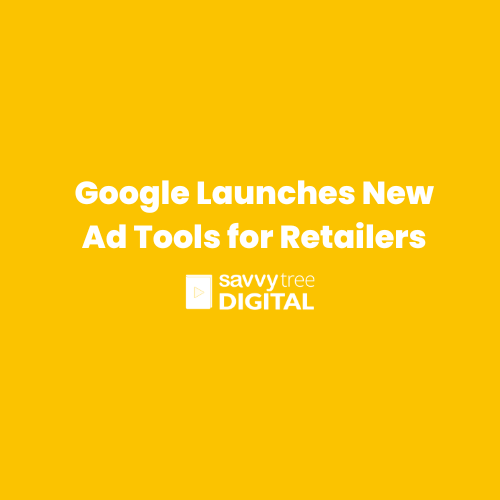In an ever-evolving digital landscape, where consumer behavior shifts with every new technological wave, retailers face the continuous challenge of staying ahead. Google, a key player in this ecosystem, has responded by unveiling a suite of new advertising tools designed to empower retailers with the latest advancements in artificial intelligence. These updates, announced at a recent “Think Week” event, signify a major push to integrate generative AI and enhanced automation across Google’s ad platforms, fundamentally changing how businesses connect with their customers.
This article explores the core features of these new tools, detailing how they are set to streamline campaign management, boost creative production, and deliver more effective, data-driven results for retailers of all sizes.
Performance Max: The Omnichannel Powerhouse
At the heart of Google’s new ad strategy is the continued evolution of Performance Max (PMax) campaigns. Already a powerful tool for driving conversions across all of Google’s channels—including Search, Display, YouTube, Gmail, and Maps—PMax is now receiving significant enhancements.
For retailers, the key takeaway is the campaign’s increased focus on omnichannel performance. Performance Max can now optimize for total sales, encompassing online, in-app, and in-store conversions. This is a game-changer for businesses with both a digital and a physical presence, as it allows them to create a cohesive marketing strategy that captures demand wherever it arises. New features also allow retailers to display local offers to nearby shoppers, seamlessly bridging the gap between digital discovery and a physical store visit.
Furthermore, Google is introducing new budgeting capabilities within PMax, enabling advertisers to set a total budget for key shopping periods ranging from 3 to 90 days. This is particularly useful for seasonal sales events like the upcoming holiday season. Google’s AI will then automatically pace spending to align with peaks in consumer demand, ensuring maximum return on investment.
The AI-Powered Creative Revolution: Asset and Product Studio
One of the most exciting developments is the deep integration of generative AI into the creative process. Google is rolling out new, AI-powered content generation tools within its “Asset Studio” and “Product Studio” elements in the Google Ads app.
Retailers can now upload a single product photo and, with a simple text prompt, have Google’s AI generate a new, campaign-ready image. For example, a retailer can upload a photo of a jacket and prompt the AI to place it on a “young man walking in the park.” The AI will generate a realistic scene, preserving all the key details of the product, such as its fabric and logo. This dramatically reduces the time and resources required for photoshoots, allowing brands to create a vast library of high-quality, diverse visual assets for their campaigns.
The new tools also include features for batch generation of AI content and text-to-video capabilities, providing even more options for dynamic and engaging creative. This marks a shift from simply optimizing existing assets to actively creating new ones with the help of AI, offering retailers a powerful new way to scale their creative output and maintain brand consistency.
Merchant Center Next: A Simplified Retail Hub
Google Merchant Center, the central hub for retailers to manage their product data, is also getting a significant overhaul with the introduction of Merchant Center Next. This new, streamlined version is designed to be more intuitive and user-friendly, particularly for small to medium-sized businesses.
A major improvement is the automatic product data detection. Merchant Center Next can now automatically crawl a retailer’s website to pull in product information, such as titles, descriptions, prices, and images, eliminating the need for manual feed uploads. This not only saves time but also reduces the risk of errors that can lead to product disapprovals.
Merchant Center Next also consolidates reporting and insights into a single, holistic suite. Retailers can now access a range of valuable, AI-powered insights in one place, including pricing reports, competitive visibility tools, and retail-specific search trends. This data helps businesses stay ahead of shifts in demand, understand their market position, and make more informed strategic decisions.
Shoppable Experiences and Customer Loyalty
Beyond the core campaign and data tools, Google is enhancing the user experience with new shoppable ad formats and loyalty features. The most prominent example is the new shoppable YouTube masthead ad. This top-of-page ad placement on YouTube’s homepage now allows retailers to feature specific products, turning the high-visibility placement into a direct sales driver.
Additionally, Google is introducing loyalty-focused offerings that allow retailers to showcase member-only pricing and shipping benefits directly in their ads. This is a powerful way to not only acquire new customers but also to foster brand loyalty and retention by rewarding existing members.
The Road Ahead for Retailers
These new tools signal a clear direction for Google’s advertising platforms: more automation, more AI, and a deeper focus on the full customer journey, from discovery to conversion. For retailers, this means a future where the creative process is accelerated, campaign management is simplified, and data-driven decisions are more accessible than ever.
While the new AI tools offer unprecedented efficiency, they are most effective when combined with a retailer’s unique expertise and high-quality assets. By providing Google’s AI with strong “audience signals”—data about a brand’s most valuable customer segments—and a diverse set of creative materials, retailers can prime the system for success. The ultimate goal is to create a symbiotic relationship between human strategy and artificial intelligence, one that allows retailers to connect with the right customers at the right moment, turning a busy season into their best season yet.

